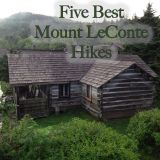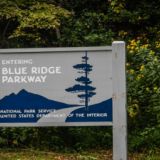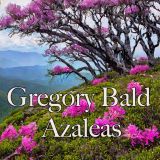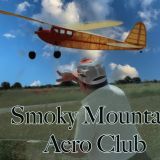Discover America’s Largest Underground Lake, The Lost Sea, in the Foothills of the Great Smoky Mountains
In the foothills of the Great Smoky Mountains is America’s largest and the world’s second largest underground lake, The Lost Sea. The lake is located in an extensive cave system known as Craighead Caverns, a National Park Service National Natural Landmark, located in Sweetwater, TN.
The caverns are named after their former owner Cherokee Chief Craighead and were used by the Native Americans as a tribal council meeting place. In 1939, 20,000 year-old bones and footprints of a giant Pleistocene jaguar were discovered in Craighead Caverns and are now on display at the Museum of Natural History in New York City. There are markings on the walls of the cave left by Confederate soldiers who mined saltpeter in the cave during the Civil War.
The underground lake was discovered in 1905 by 13-year-old Ben Sands. At 220 feet wide and 800 feet long, The Lost Sea has made it into the Guinness World Records. The Lost Sea is second only to Dragon’s Breath Cave as the world’s largest, non-subglacial, underground lake. That cave is located in Namibia, a country in southern Africa.
HeySmokies’ own intrepid reporter Laurie Crater Battles, recently visited The Lost Sea for a first-hand account of this amazing adventure deep under the mountains:
Go underground at The Lost Sea Adventure in Sweetwater, Tennessee for a land and water experience that’ll have your family talking for years! I love caves. I suppose that makes me a cave woman (who reads an awful lot). I was not surprised to find myself relishing every minute of a recent tour of this fabulous attraction. It’s basically a wide-open cavern, complete with twists, turns, ups and downs, and eons of history that also features a 4-acre lake you can traverse by glass-bottomed boat. What could be better for the urban adventurer? Nothing, I submit to you!
Though visiting in winter means you don’t get to tour the attraction’s village of historical shops and sites (more about that later), what it does mean is that you are not sandwiched into the throng (up to 1,000-person-a-day strong) that passes through the doors of this place every summer. You get to hop into a tour with a handful of others and meander through the place at a leisurely pace. You’re not crowded. You get good pictures and, best of all, you can savor this unique and wonderful natural phenomenon.
As soon as you enter the caverns, you’re treated to a vista that’s fairly expansive. You can see bends in the path, lit by recessed illumination that was added to give you a feel for the nooks and crannies that give the cave character. Your tour guide will fill you in on where to spot crystals and formations (like the larger one that resembles giant slices of bacon) and regale you with stories of Indians meeting in secret (See the smoke stains?) and Confederate soldiers using stalagmites for target practice.
Calcium deposits on the ceiling produce a substance that has “Neosporin”-like healing properties. Plants in the caverns grow due to the spores brought in by people like me. There is a secretive world underground here, and it’s fun to explore it.
The tour takes you right up to the mouth of the natural entrance to the caverns. Decades ago, there was a bar and dance floor in the cave called the Cavern Tavern, supplied by underground moonshine stills. That venture did not last long as customers, who had to drink more to feel the effects of the alcohol underground, became more intoxicated as they made the steep climb out of the natural entrance. There were some accidents!
The room adjacent to the natural entrance has unique rock formations hanging from the ceiling due to the fact that the space was hollowed out by a natural whirlpool of water. One reason for the expansiveness of the ceilings in these caverns as a whole has to do with the fact that most of the attraction was the natural product of water flow, as opposed to being blasted out for public use.
On the path to the underground lake, the tour passes the recreation of a classic moonshine operation. The opening, or “room” housing the lake is gorgeous. The short boat ride includes a brief period of being surrounded by the rainbow trout (stocked by The Lost Sea staff) who make their home in the cave. This would be an especially exciting piece of the adventure for children. Cameras (with flash) are allowed in every part of The Lost Sea Adventure. The “ceiling” of the cave, with its typical rugged edges, closes in on the water around the perimeter. The lighting in the lake, which is 40-feet deep in places, sets the scene in a dim and distinctly “cave-like” glow. It’s just fun.
If you go during peak season, be aware that there are substantial (hours-long at times) wait times for tours. You may want to buy your tickets, then plan for another activity in-between. During peak season, you can tour an interesting piece of the attraction known as Old Sweetwater Village. Meander in and out of the buildings there, which include a glassblower, a blacksmith shop, a sweet shop, a general store and a gem mine. When you’re finished, you can stop at the village restaurant for a bite to eat.
One interesting possibility for organized groups of 12 or more is the Wild Cave Tour. This tour of the main caverns followed by exploration of cave rooms which are hard to access (lots of crawling and scooting) is especially popular with scouting groups. You can even spend the night in the cave! The opportunity is available and popular in the off-season as well as in peak season.
No matter when you choose to go, there is magic to be tasted at The Lost Sea Adventure. Best part about this mountain attraction? It’s open and fun to tour rain or shine and it’s always a cool and constant 58 degrees.
Tour tickets are $18.95 for adults; $9.95 for children ages 5-12; and free for children 4 and under. For more information, visit The Lost Sea Adventure, check them out on Facebook, or call 423-337-6616. The Lost Sea is open Monday-Sunday 9:00 am – 5:00 pm. For information on nearby lodging, and other great things to do like the Cherohala Skyway, visit Monroe County Dept. of Tourism.
 Laurie Crater Battles – journalist, blogger, hiker, biker, mom, wife, animal and coffee lover who makes her home in Knoxville.
Laurie Crater Battles – journalist, blogger, hiker, biker, mom, wife, animal and coffee lover who makes her home in Knoxville.












